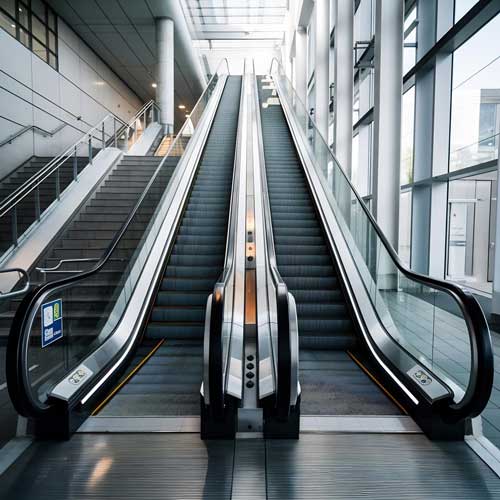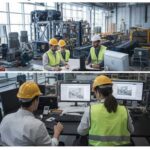
Why Choosing the Right Escalator for Your Building Matters
Escalators are a critical component in the modern infrastructure of large buildings, especially in high-traffic areas such as shopping malls, airports, hotels, and transportation hubs. They provide a seamless and efficient way for people to move between different levels of a building, offering convenience and accessibility. However, the importance of selecting the right escalator goes beyond just functionality. The right choice can ensure safety, energy efficiency, and long-term performance. Here’s why it’s essential to choose the right escalator for your building.
1.1. Safety First
One of the most crucial factors in selecting an escalator is safety. A safe escalator reduces the risk of accidents and ensures that passengers can travel with peace of mind. The escalator must be equipped with safety features like emergency stop buttons, anti-slip steps, handrails, and safety barriers. Ensuring that your escalator complies with international safety standards, such as the ISO 25745 for energy performance and safety, is crucial for preventing accidents and injuries.
1.2. Energy Efficiency and Environmental Impact
Energy efficiency has become a top priority for many businesses and organizations. Choosing an energy-efficient escalator can reduce your building’s carbon footprint and contribute to energy savings. Modern escalators come with features like energy-saving modes and variable-speed motors, allowing them to adapt to foot traffic patterns. When the escalator is not in use, it can lower its speed to conserve energy, helping your building save on electricity costs in the long run.
1.3. Capacity and Flow
The capacity of your escalator should match the flow of people in the building. For instance, escalators in airports or large shopping centers need to be able to handle high volumes of traffic, especially during peak hours. It’s essential to consider the dimensions of the space and the flow of people to determine the optimal size and type of escalator required. A poorly chosen escalator may cause bottlenecks, leading to delays and frustration for passengers.
1.4. Aesthetics and Design
While functionality is paramount, the aesthetic value of an escalator should not be overlooked. The design of the escalator should complement the architectural style of the building. Whether you are designing a modern, sleek space or a more traditional environment, the escalator’s appearance should blend in seamlessly with the surroundings. Many modern escalators offer a wide variety of finishes and customizable features, such as glass panels, LED lighting, and stainless steel handrails, to align with your building’s design vision.
1.5. Durability and Longevity
Escalators are long-term investments, and choosing one that is durable and built to last is essential for minimizing maintenance costs and downtime. High-quality escalators are made from materials designed to withstand heavy usage, such as high-strength steel for structural components and durable rubber or metal for the steps. In addition, manufacturers often provide warranties and after-sales services to ensure that the escalator continues to perform efficiently for many years.
1.6. Consultation and Expert Advice
Choosing the right escalator for your building can be a complex decision. It’s highly recommended to work with an experienced escalator installation company that understands your building’s specific needs. Experts can assess factors such as space, expected foot traffic, and energy efficiency goals, and recommend the best escalator model to fit those requirements. Partnering with a reputable company like Schneider Global Lifts ensures that you make an informed decision that meets both your functional and aesthetic needs.
In conclusion, the right escalator is more than just a convenience—it is a significant investment in your building’s functionality, safety, and energy efficiency. By considering factors such as safety, energy performance, capacity, design, and durability, you can ensure that your building is equipped with an escalator that serves both its occupants and its long-term operational goals.




